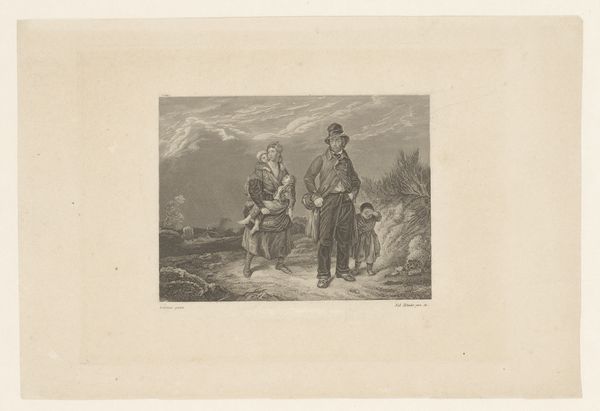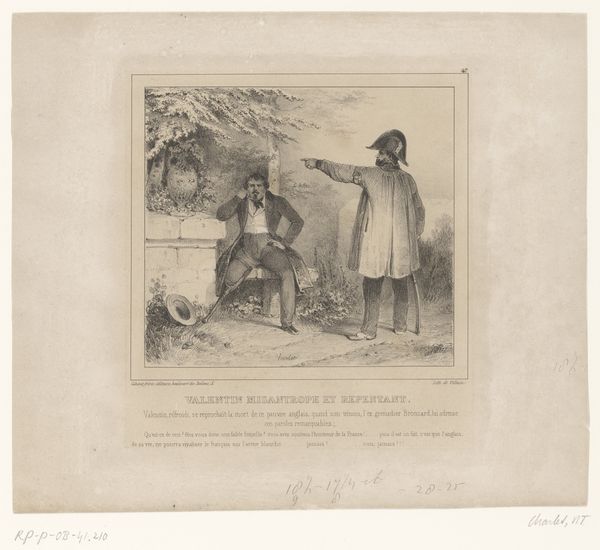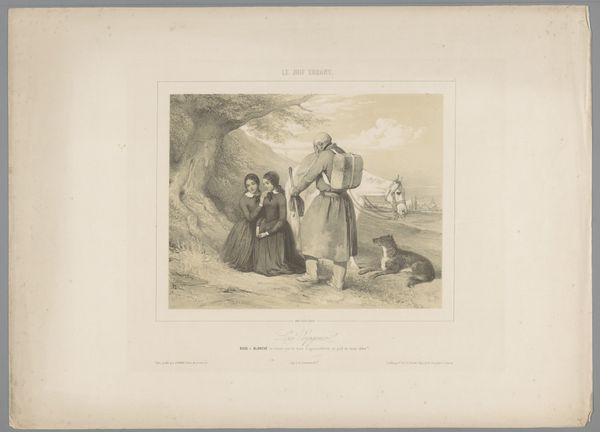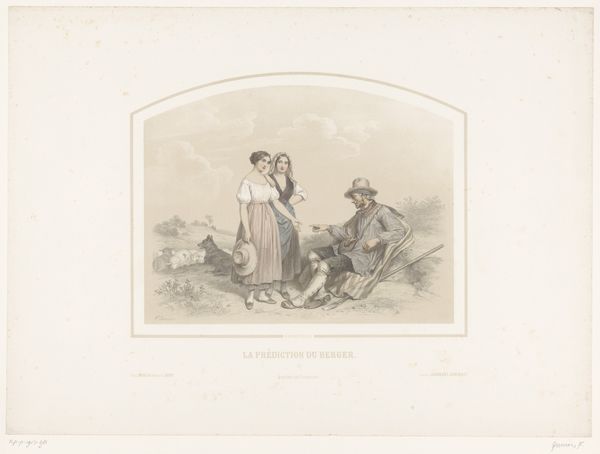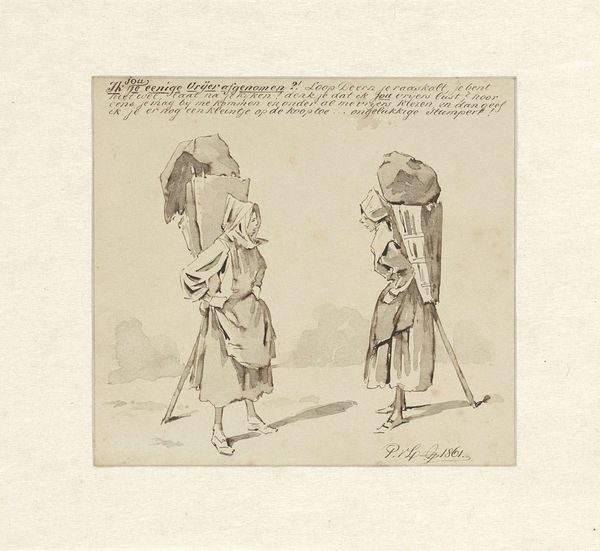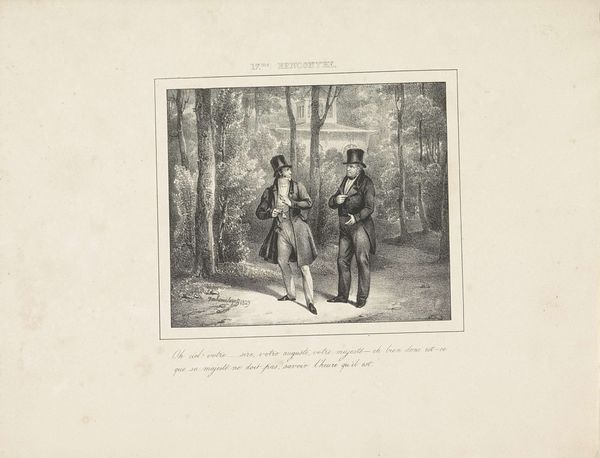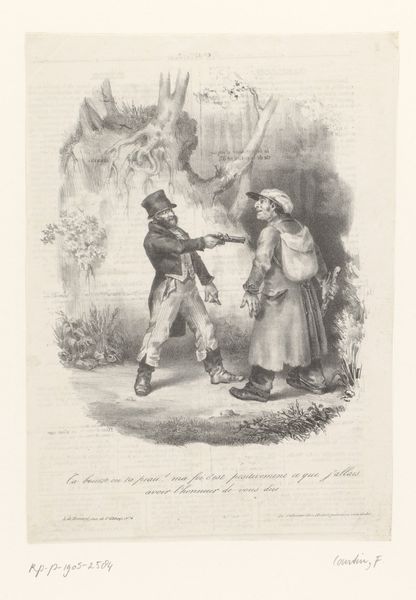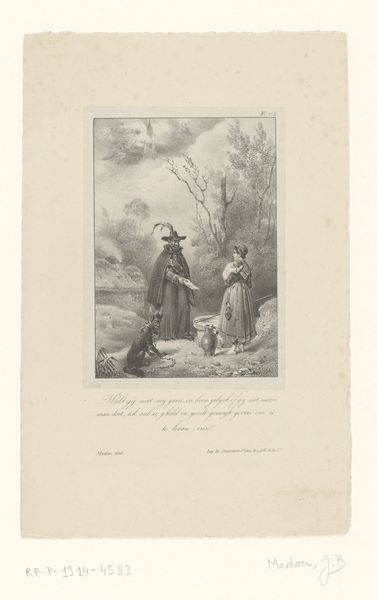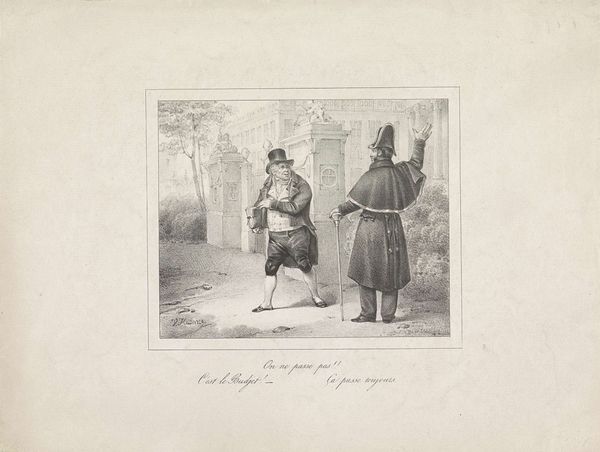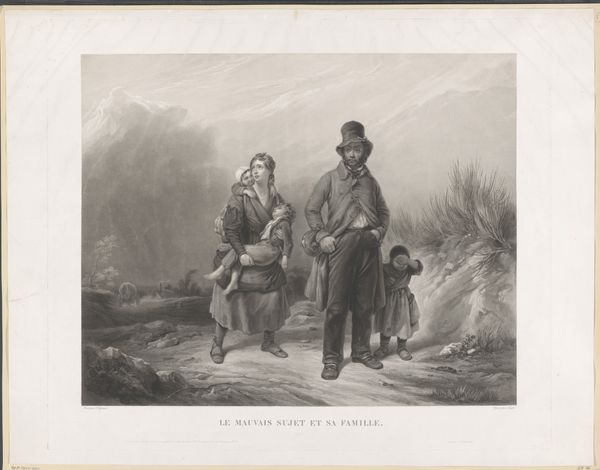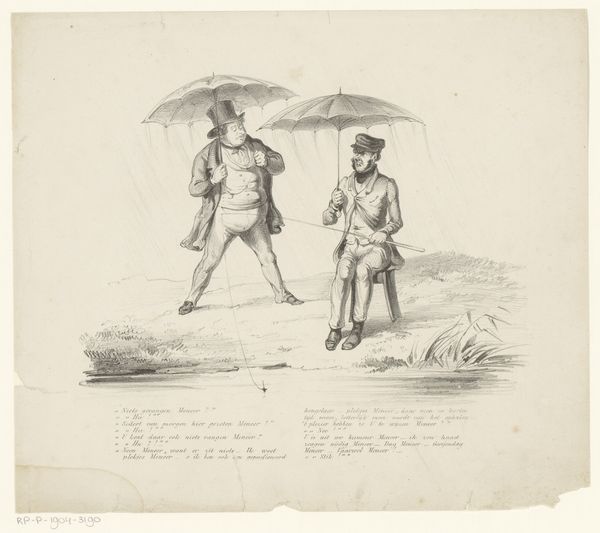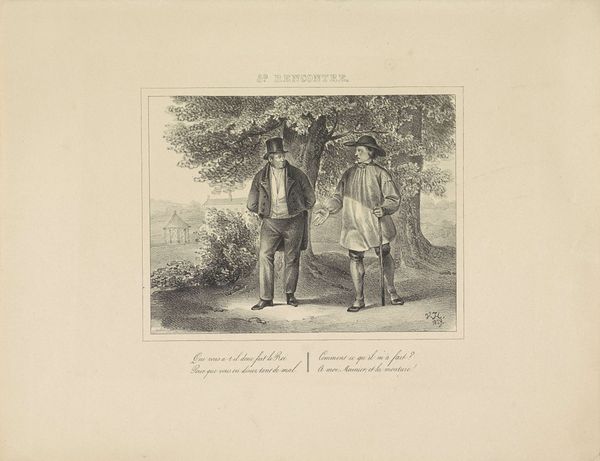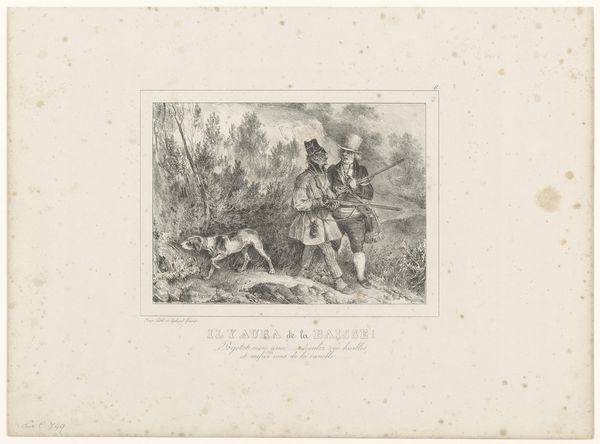
print, etching, engraving
#
portrait
#
narrative-art
# print
#
etching
#
old engraving style
#
cityscape
#
genre-painting
#
engraving
Dimensions: height 235 mm, width 305 mm
Copyright: Rijks Museum: Open Domain
Curator: This print, created in 1829 by Jean-Louis Van Hemelryck, is titled "Koning Willem I ontmoet een stroper," which translates to "King William I meets a poacher." The work is an etching, falling into both portrait and genre-painting categories. Editor: There's something instantly striking about it; the rough landscape looming in the background makes the figures in the foreground seem almost like actors on a stage. It feels heavy, and almost like a theater of class and power. Curator: Absolutely. The visual language positions the King in stark contrast to the poacher. The King, on the left, is dressed in sophisticated dark coat and hat, his hands respectfully tucked into his side. He emanates authority. Editor: And that poacher! He's pointing towards something with real fervor; or maybe a wild frustration, as his entire attire seems rugged. The scene implies an exchange, perhaps even a confrontation. Look at his expression versus the King’s subtly smug face. What power! Curator: The artist captures a fascinating intersection of class and legality, the narrative artfully displayed through clothing, body language, and the positioning of figures. His gestures are theatrical—like an invitation into his outlawed world. Editor: The figures feel like characters extracted from a play, a comedy maybe or some social drama; there's even writing beneath the art that confirms this. And yet there’s such detail in the scene. The wild landscape looms above them! Curator: Consider how Van Hemelryck uses printmaking here. Each fine line constructs not just physical likeness, but also complex emotional and social dynamics—rendering visible the tensions brewing within the society it depicts. What does this imagery tell us about that world and time? Editor: It really is captivating. It pulls you in, demanding a closer inspection not only of the lines on the page, but also of the unseen stories simmering just beneath the surface. I like how something as fragile as a paper and an etching tool becomes so alive and engaging. Curator: It provides us, certainly, much to reflect on about social hierarchy, the rules of nature, and human interaction. Editor: Indeed. What starts out appearing as simple art actually opens itself up to wider ideas about history. It's not only visually remarkable; the etching asks viewers to engage the historical circumstances that it attempts to reflect on, too.
Comments
No comments
Be the first to comment and join the conversation on the ultimate creative platform.
